#fab mike solos
Explore tagged Tumblr posts
Note
Your art is so good I am shook 🤩
But also how can you have a Grease au with no hair slicked back like a greaser??? It's the whole movie title 😭😭 luv you tho
NONO you are so right anon, it did cross my mind but I definitely ignored myself because I’m madly in love with their canon bangs —
HOWEVER I sketched it on mike and,,, I’m warming up to the forehead,,,,,

We can say that mike’s hair is too unruly to stay styled for long, but maybe when he gets up early and motivates he can get the full greaser look? That way he can be drawn with both hairstyles and it reflects his good and bad days 😌 <33
#ask#byler grease au#mike wheeler#mike wheeler fanart#fab mike solos#i’m so normal about this au can you guys tell#my art
158 notes
·
View notes
Note
congratulations on the 5 months! you hardly ever see a group that last this long in the tags now a days. it looks like you have a great crew here! what's your most wanted? and how many can we start with? sorry if you get asked this a lot! i wanna try to get back into rp again.
aw, thank you for this ! we do have a great group of writers here and all the muns here are so friendly ! you can bring in as many as you want ! we have no limit here.
and our most wanted? i'd say--
ladies: naomi, jade cargil, bianca belair, renee paquette, willow nightingale, allie katch, brandi rhodes, myla grace, lash legend, iyo sky, auska, thekla, vipress, lola vice, carmella, charli evans, thunder rosa, kamile, tegan nox, thea hail, wren sinclair, shotzi, xia brookside, maya world, b3cca, ruby soho, queen aminata, hikaru shida, marina shafir, killer kelly, lita, maryse, barbie blank, nikki cross, ivy nile, b-fab, candice lerae, indi hartwell, detla, jaida parker, carlee bright, kendal grey, mckenzie mitchell, red velet, riho, arkady aura.
males: jimmy uso, solo sikoa, jacob fatu,tama tonga, tonga loa, kevin owens, sami zayn, eddie kingston, alex coughlin, brody king, danhausen, chuck taylor, trent beretta, baron corbin, konosuke takeshita, the blade, the butcher, max caster, adam copeland, cash wheeler, dax harwood, bo dallas, joe gacy, dexter lumis, isiah kassidy, marq quen, mark davis, jeff cobb, matt hardy, jeff hardy, effy, corey graves, triple h, bryan keith, big bill, don callis, mike bennett, matt taven, roderick strong, kyle o'reilly, bobby fish, pac, billy gunn, shane taylor, lee moriarty, lee johnson, wes lee, katsuyori shitbata, justin roberts, lance archer, powerhouse hobbs, any member from dark order and LWO, samoa joe, sheamus, kazuchika okada, el phanstasmo, zack sabre jr, lio rush, robbie eagles.
0 notes
Text
Album Reviews: Ringo Starr / Haim
This week I got to review a new EP and a new reissue.
Ringo Starr Rewind Forward

EP cover
In the last few years Sir Ringo Starr has been knocking out killer EPs including 2021’s Zoom In and Change the World (both were included on my Best Albums of 2021 list) and last year’s EP3 (read my review here). While he hasn’t released a full length album since 2019��s What’s My Name (read my review here), he has been keeping super busy with what is now his 4th EP since 2021, Rewind Forward drops this Friday from UMe.

Sir Ringo Starr (center behind drums) with the All-Starr Band on June 2, 2022 at Boch Center
Last year, I was lucky enough to see Ringo Starr and his All-Starr Band live (my second time seeing them) and I was blown away that at age 82 (he's now 83), he is still a showman singing and drumming like he was in his twenties. He was always the funny one in The Beatles. Over time it has become cool to poke fun at Ringo, but his solo career is criminally underrated. As a member of The Beatles, he gets loads of respect, but as a solo artist he doesn’t get the recognition he deserves. He has to live up to the Fab Four and each of their solo careers, but he has actually made some great solo albums. For the new album he recorded in his home studio. Like the previous EPs, there's a number of appearances from Ringo's musician friends including Toto's Steve Lukather and Joe Williams, The Heartbreakers' Mike Campbell and Benmont Tench, Joe Walsh (Ringo's brother-in-law), and best of all, Ringo's Beatle bandmate Paul McCartney co-wrote "Feeling the Sunlight", the highlight of the EP. Over the years Sir Paul and Ringo have done quite a few duets and collaborations, most recently on 2021's "Here's to the Nights" and on Dolly Parton's upcoming rock album for a cover of "Let It Be". But it's always special to hear the two remaining Beatles performing together. Something I’ve talked about in previous EP reviews is that when you have a short album of four or five songs, the bullseye is bigger and easier to hit. With this EP, it is Sir Ringo’s rocking pop sound and it hits the bullseye and then some!
For info on Rewind Forward
3.5 out of 5 stars
Haim Days are Gone 10th Anniversary edition

10th anniversary edition
This year marks the 10th anniversary of the debut album from the sister trio of Este, Danielle and Alana Haim, better known as Haim. Since that debut they have become a power pop sensation, able to tour with Taylor Swift AND headline alt-rock festivals. What has really gotten my attention is the collaborations they have done with my favorite filmmaker Paul Thomas Anderson. Their mother was PTA's former art teacher and they have made several notable music videos including "Little of Your Love" (my #1 Music Video of 2017) and "Lost Track" (my #1 Music Video of 2022). PTA also cast Alana as his lead in Licorice Pizza and Danielle and Este as her sisters. A match made in cinematic heaven! But I digress, to celebrate the 10th anniversary, Legacy recently released an anniversary edition on vinyl.

Haim in 2013
When the album came out, there was a lot of attention on Haim as being this pop rock group with a serious influence from the likes of Fleetwood Mac and Pat Benatar (both true). The album's big single "The Wire" was a break up anthem for the ages and I included it on my Best Songs of 2013 as well as my Best Songs of the 2010s list. The album as a whole had some really strong songs and then some that weren't bad but just weren't as strong. Hence I never picked it up. Since that album, they have released two more solid albums and they have become a reliable band in the rock genre at a time when rock isn't seeing the same album sales it once was. Upon returning to the debut album, it doesn't feel dated at all. It feels timeless and I liked it a lot better than I remembered the first time I heard it circa 2013. In terms of the anniversary edition, there is a cool packaging with the Haim sisters on the plastic covering and the grass background behind them and it's on green vinyl. It's a double album with outtakes, demos and remixes. If you were a huge fan of some songs and felt the album as a whole is good, but not great, I say listen again. The remixes are mostly For Fans Only, but the album itself is worth checking out.
For info on Days Are Gone
3.5 out of 5 stars
0 notes
Link
0 notes
Text
Roger live in Newcastle
He!!! was!!! so!!! happy!!! when he came out and launched into Strange Frontier and that crowd just sang it right back to him. Even for someone at his level there must always be that wonder of how the crowd are going to react and it was so lovely to see him get that warm reaction for one of his solo songs.
It was a really, really great show with a really well thought out set list - but also a set list that was Roger having fun and playing the songs he wanted to play, whether they mean something special to him or he just really enjoys playing them, and that gave the whole thing a special quality: he was getting a lot of this so we did too. He rocked, he made the music swing, he sang beautiful slow songs, it was really great. The band was kick ass and he directed them but also gave them space to make the music a bit their own as well.
For a 72-year-old guy he really gave his all for the set. He and Spike both took a break while the rest of the band did a really cool rendition of Rock It (Prime Jive), but he was back up there pretty quickly. His voice was really great - he absolutely nailed some of the hard rock and some of the quieter moments. There were a couple of flubs but hey, it’s the first night of a tour. Live isn’t perfect, but Roger and those fab musicians were pretty bloody brilliant. I double dare him to throw the Clapping Song in on the last night of the tour though. With guest spot from Brian to play pat-a-cake with Roger to the instructions.
I can now say I’ve seen Roger throw his tambourine in the air and catch it, throw his tambourine in the air and miss it, try to pull the mike off the stand in a smooth rock move but instead hit himself with the mic stand and smile at himself, do that thing where he gets all up in the guitarist’s business, conduct the band so that they play at the right tempo... it was a masterclass of the Best Bits of Roger Solo Live.
Also a special shout out to the set lighting for Man On Fire, which was *exactly* the same colour as the video lighting, and let me enjoy the thought for a second that he was going to re-enact it on stage.
This was my first live gig after two years and it was so wonderful to be surrounded by music again. When you listen to videos on your computer or to records you don’t get that sense of the music being all around you and going through you and it was just amazing. And that’s the effect Roger wants. He didn’t do a lot of drumming but it was a revelation to be right in front of him while he was doing it and so focused on getting this sound which is so precise and so tuneful and at the same time so BIG and all-encompassing. It’s not primeval, it’s very musical, but it was totally intoxicating. It just thrills me to see him doing it, having been possessed by this music since he first heard Rock Around the Clock as a tiny child, and still out there living the dream.
Did I mention that he!!! was!!! so!!! happy!!! to be playing live?


#roger taylor#santa claus is coming to town#perfect tour is perfect#york review#yes i wss very close to the stage#it was FABULOUS#my photos are very rubbish#i didnt take very many because i wanted to have the experience#sorry guys#many many apologies for calling Newcastle York originally#they have nothing in common#apart from both being very nice
86 notes
·
View notes
Text

Album Review: Tedeschi Trucks Band - I am the Moon: IV. Farewell
The first few measures sound like the Beatles. But “Last Night in the Rain” is the Tedeschi Trucks Band channeling the Fabs’ harmonies and implied psychedelia on the opening track of its I am the Moon finale - IV. Farewell.
It’s the strongest of the lot, owing mostly to “Rain” and the following “Soul Sweet Song,” a joyful number with all 12 members contributing that pays tribute to keyboardist Kofi Burbridge and finds his bandmates accepting his 2019 death.
Now there’s no use wishing for your sweet return/’cause I see you in the morning sun/and I hear you on the whispering wind/and I feel your rhythm moving me/’cause your soul’s sweet song’s still singing, Susan Tedeschi and the TTB choir sing with bittersweet resolve on a track guaranteed to evoke a visceral response in music lovers inclined to such things.
The album closes with more nods to Burbridge in the form of the acoustic “I Can Feel You Smiling” as Derek Trucks scribbles plugged-in lines atop his wife’s vocals. “Another Day,” too, makes the case the titular Moon is Burbridge and Farewell represents the band moving on from his loss.
“See you in the moon,” Tedeschi sings on the former.
Between come the trite, new-sound TTB of the Moon series, including the Mike Mattison-crooned “Where are My Friends?,” whose chorus is: At the heart of the matter/at the heart of the matter.
Balladic and repetitive - with a Kenny G-style sax solo and no backgrounds - “D’Gary” finds Susan Tedeschi singing about creeks with no paddles and babies’ twinkling toes. It’s saved only by a noodly, Jerry Garcia-inspired guitar solo on the outro.
With Farewell’s arrival, it’s now clear I am the Moon should’ve been one album instead of four. Come back to Sound Bites in just a little bit to read his suggested tracks and running order for your playlist.
Grade card: Tedeschi Trucks Band - I am the Moon: IV. Farewell - B-
8/30/22
#tedeschi trucks band#susan tedeschi#derek trucks#the bealtes#kofi burbridge#kenny g#jerry garcia#i am the moon iv: farewell#2022 albums#mike mattison
2 notes
·
View notes
Text
When It Started: Julian Casablancas
The Strokes lead singer was born on August 23, 1978 in New York City. His father John was the founder and owner of Elite Model Management, while his mother Jeanette worked as a Danish model and former Miss Denmark. At the age of eight, his parents would divorce. His mother would later marry painter Sam Adoquei, who heavily influenced the young Casablancas by introducing him to classic rock artists such as the Doors. Julian has several half brothers and half sisters through his father’s multiple marriages. The future frontman of the Strokes would attend a variety of schools throughout his early life, which led him to meet many of the future members of the band through schools such as Lycée Français de New York, the Institut Le Rosey boarding school in Switzerland, and the Dwight School in New York. At the latter, Julian would start to informally play music with Nick Valensi and Fab Moretti, which ultimately was the beginning of the Strokes. The singer would never finish high school, but did receive his GED in place of it. He would later attend music classes at Five Towns College, which became the very first time that Casablancas actually enjoyed going to school.
Throughout the history of the Strokes, Julian has served as the principal songwriter for the group. Some have said that he would insert a large measure of control over the music, but he and other members have said that does not seem to be the case anymore. Each member of the group brings their own ideas about future songs, then the band decides what to use and what to discard. Nick Valensi would say this about the singer. “His ear is so sharp. He's the one with the ear for detail in this band. Creatively, he is a force to be reckoned with." In 2009, Casablancas released his first solo album entitled Phrazes for the Young through RCA. He would talk about releasing music as a solo artist versus material from the Strokes. “It’s like touring with me or with five of me." The singer would also go on to say that as a solo artist he is able to experiment with his music and lyrics in ways that he would probably avoid in the Strokes. He has always been quite adamant the brand name that is the band should be protected. The title of the album had been inspired by the Oscar Wilde book, Phrases and Philosophies for the Use of the Young, while the album itself embraced a very 1980’s new wave sound that had a heavy emphasis on the use of synthesizers. He talked about this new direction in his music. “I would've gone weirder with the music, but I wanted to be smart. I didn't want people to say, 'Okay, this is his weird abstract thing,' and dismiss the album. I worked too hard on it for that to happen... I wanted to be crazy original and bridge the gap between traditional music and modern music." The LP would be recorded in New York and Omaha, Nebraska with producer Jason Lader and some additional assistance from Mike Mogis of Bright Eyes. A tour would follow the release with a backing band called the Sick Six including Jeff Kite (keyboard), Nelson London (synthesizer), JP Bowersock (guitar), Danielle Haim (percussion) and Alex Carapetis (drums). The first major shows in North America took place over the course of a month at the Downtown Palace Theater in Los Angeles. This venue had been previously used in the Michael Jackson “Thriller” music video.
In 2013, Julian began another side project called Julian Casablancas + the Voidz. Other members of this new band included Jeramy "Beardo" Gritter and Amir Yaghmai on guitar, Jacob "Jake" Bercovici on bass (as well as synthesizer), Alex Carapetis on drums and percussion, and Jeff Kite on keyboard. In 2017, the group wanting more recognition as a band rather than a side project changed its name to simply the Voidz. The goal of the group was to create music that represented a quality of being both very aggressive and quite complex. As lead vocalist and songwriter, Casablancas began to explore musical scales within Middle Eastern music, not any traditional Western scales. Jake Bercovici has said, they are interested in “exploring [music] from the margins.” The singer looked upon the group as a vehicle in which he could create music that embodied characteristics much more experimental than anything that the Strokes ever offered. Their debut album Tyranny was released in September 2014 through Casablancas’s own record label, Cult Records. The album would also feature an 11 minute single entitled “Human Sadness,” which Julian actually wrote originally for a short documentary film about his stepfather, painter Sam Adoquei. Their second album would be released in March 2018 entitled Virtue, which took on a much stronger political point of view emphasizing the paradox between truth and lies.
Over the years, Julian has collaborated on a number of tracks with other artists. In 2006, the Strokes teamed up with Eddie Vedder and Josh Homme for a cover of “Mercy Mercy (The Ecology)” by Marvin Gaye. On the track, Vedder sang backup vocals, while Homme would play drums. In 2008, he recorded a collaboration with Pharrell and Santigold for Converse on a track called “My Drive-thru.” In 2009, the singer lent his vocals to the comedy trio the Lonely Island for a parody song on their debut album Incredibad called “Boom Box.” The Strokes frontman would later record a cover of another Saturday Night Live parody, “I Wish It Was Christmas Today.” He would eventually perform the song live with Jimmy Fallon, Horacio Sanz, and the Roots on Fallon’s talk show. In 2010, Casablancas sang vocals for the track “Little Girl” on the 2010 Sparklehorse and Danger Mouse album Dark Night of the Soul. In 2011, Julian performed the song “Rave On” for the release of a Buddy Holly tribute record. In 2013, he would also provide vocals, lyrics, and guitar to the Daft Punk song instant crush on their 2013 record Random Access Memories. The album would go on the win the Grammy for Album of the Year, which he would receive recognition for his work on it. In 2015, Julian created a cover with Jehnny Beth of the 1983 song Boy/Girl, which would be released through Cult Records. In 2016, he would also provide covers for the soundtrack to the HBO series Vinyl performing three tracks by the Velvet Underground, “Venus in Furs,” “Run Run Run,” and “White Light/White Heat.” That same year, the singer would pen a song for Har Mar Superstar on his album Best Summer Ever entitled “Youth Without Love.”
In 2009, Casablancas started his own music label, Cult Records. The company currently includes a roster of The Growlers, Har Mar Superstar, Songhoy Blues, Rey Pila, Karen O, Promiseland, The Strokes, The Voidz, Exhibition and Cerebral Ballzy. Past artists were Albert Hammond Jr., The Virgins, Reputante, INHEAVEN, Exclamation Pony and Nelson London (C O L O R). The company first began as an imprint in order to release his first solo album Phrazes for the Young. As for his influences, the earliest ones were the Doors and Velvet Underground. He would say this about the latter group. “The way Lou Reed wrote and sang about drugs and sex, about the people around him — it was so matter-of-fact. He could be romantic in the way he portrayed these crazy situations, but he was also intensely real. It was poetry and journalism." Other influences include Bob Marley, Nirvana, and Pearl Jam. He would later say that the song “Yellow Ledbetter” inspired him to start making music. In his personal life, the singer would marry the Strokes assistant manager, Juliet Joslin in 2005. They have two sons together, but divorced in 2019. In the early days of the Strokes, Casablancas struggled with drinking, but he has been completely sober since 2009. Julian would say in an interview about trying to quit drinking, he was “hungover for five years.”
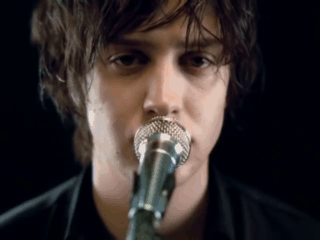
13 notes
·
View notes
Photo


HAPPY BIRTHDAY to the First American Music Concert (Boston 1731), bassist-composer Samuel Adams, Suzy Bogguss, Brahms’s 2nd Symphony, drummer Clive Bunker, bandleader/multi-instrumentalist "Charlie" Creath, Skeeter Davis, Bo Diddley, Ellie Goulding, Simon Guggenheim, artist Aad de Haas, John Hartford, Dmitry Kabalevsky, Rudyard Kipling, bandleader-pianist Vincent Lopez, Jack Lord, Jeff Lynne, Robert Quine, Henry Purcell’s brilliant 1689 opera DIDO & AENEAS, film director Carol Reed, Del Shannon, Frank Sinatra’s 1968 “My Way” single, the 1950 single “60 Minute Man” by The Dominoes, Patti Smith, Dave Stewart (Hatfield & The North), Noel Paul Stookey (thank you for the fan mail), Russ Tamblyn, Tyrese, Tracey Ullman, V (BTS), Fred Ward, Stevie Wonder’s 1981 single “That Girl,” Tiger Woods, and a pair of Monkees, Davy Jones and Michael Nesmith, born the same day (different years). Both men have brought meaning and joy to my life in different ways.
Before I began my long association with Davy Jones, I was already a fan of Mike Nesmith’s “cosmic country” and multi-genre/media work. In 1979 I was working in a San Francisco used record store, an outpost for noting trends. After years of The Monkees not being on my radar, I saw a revival of interest in them due to the HEAD film circulating on the “art movie” circuit, The Sex Pistols covering “Steppin’ Stone,” and a New Wave gestalt that celebrated the Pre-Fab 4 for their garage band template. I reappraised their records and re-discovered Nez’s solo work, which inspired me and influenced my songwriting. Years later I added Nez’s “Silver Moon” to my solo set, which caught Davy’s attention and we sang it live a couple of times. That was my “talking point” when, in 1996, I finally met Nez during the JUSTUS sessions in Nashville—at which all 4 of juggled percussion instruments around the studio like rock’n’roll Marx Brothers.
My relationship with Davy began in 1992. I was working in a recording studio in central Pennsylvania. One day he rang up and booked a meeting, asking me, “Do you understandThe Monkees?” I’m looking at this guy I used to see on the back of cereal boxes, and I must’ve given him the right answer because we went to work on a video and archival projects. We lived near to each other and started playing music together. It turned into a long and creative unfolding of recordings, tours, and friendship. I’m extremely grateful for the career doors he opened for me and the stage craft I learned from him. Of course I was devastated when he died, and I wrote a song “Like a Big Brother” (still to be recorded) that summed up our connection.
To celebrate this day I found this clip of us covering Nez’s song “Papa Gene’s Blues” with Peter Tork. Cheers! https://www.youtube.com/watch?v=2rZf8BIUP9g
#Monkees #Nesmith #Michael #Mike #DavyJones #PeterTork #PapaGenesBlues #JohnnyJBlair #Head #SteppinStone #NewWave #countryrock #cosmiccountry #garageband #birthday
#Monkees#Nesmith#Michael#Mike#Davy Jones#Peter Tork#Papa Gene's Blues#Johnny J Blair#Head#Steppin' Stone#New Wave#Sex Pistols#country rock#cosmic#garage band#birthday
9 notes
·
View notes
Video
vimeo
WHO WOULD YA BE WITHOUT YR FRIENDS? from Rick Berlin on Vimeo.
Soon after the pandemic hit and I stopped working (St Pats) my roommate, Alex Gang, pointed out that I wasn’t getting any exercise. (At Doyles I clocked in between 3-5 miles a night walking all over the joint.) Thus began, at Alex’s urging, The Walkabouts. The ‘constitutionals’. I loved it. The slowing down pace, the places I’d hurtle past in a car. On my own it could sometimes feel like obligatory homework, but once outside, I was happy to be there. Solo was cool but I realized that if I could ask a friend of mine to walk with me, conversation would quicken the time. Since I’ve not been to the Behan or was yet to land a new job, my social life was void. But on these walks my friend(s) and I would have conversations that lasted a lot longer than they might have at a bar or glancing off co-workers in a ping pong rush. An hour, give or take, was a super good time for all those reasons. Some friends I hadn’t seen for nearly 20 years showed up. Dave Richmond (long ago ally at those Jacques Cabaret clubhouse nights) brought a bag of ‘magic rocks’ which I’d hand out (until I ran outa them) to whomever was with me. Ever the annoying ‘Dad’ Documentarian, I took evidence selfies so I could post em up on facebook. Then #thenickelanddimeband wound up back in the studio to work on a 7 song ep. ‘Who Would Ya Be Without Yr Friends?’ was one of the tunes. Back in 2019 during my surgery convalescence I asked Shamus Moynihan how I could thank everyone who chipped in on a GoFundMe site for the weeks I was outa work. ‘Write a song,’ he said. This is that song, only the 2nd blues song I’ve revere written, and, I suspect, with the exact same changes.
Note: God knows I’m lucky to have as many friends in my life as I do. Aren’t we all? But for this video I stuck with my MO of only including people who walked the walk or whom I ran into along the way. The song is also for those who live too far away or who for some reason I never asked to join up with me. All apologies on that.
Cast:
Band:
Robert Manochio (guitar) Ricky McLean (guitar) David Goodchild (bass) Chris Antonowich (kit) Jane Mangini (organ,/keys)
Thomas Wenzl (engineer/Bitch Kitty Studio) Brian Charles (mastering/Zippah Recording Studios)
Art: Jake Walker
Song: Berlin
ASCAP LKobsterland Publishing
Edit: Berlin
Fab Walkabout Friends (the look in their eyes says it all):
Silvio Neef (and his dog Cooper) , Ricky NcLean (and his dog Halle), Andrea Juan, Gavin Juan, Mickey O’connell Sholes, Gary O’Connell, Jill Petruzziello, David Doyle, Dylan Doyle, Sam Brown, Bri Hayes, Sarah Davey, Erin Marie, Emily Keane, Miranda McLean, Timothy Newell, Lynn Newell, Maggie Newell, Jeff Chasse, Alan Anderson, Alex Gang ,David Goodchild, Elizabeth Goodchild, Charlie Goodchild, Beau Goodchild, Chris Antonowich, Alex Antonowich, Annabelle Antonowich, Thomas Wenzl, Makala Noble, Bodhi Wenzl/Noble, Larry Owen (& his dog, Tetsy), Randy Owen, Jillian Higgins, Kara Higgins, Shamus Moynihan, Margie Nicoll, Nick Kent, Matt York, James Sullivan (& his dog Orwell), Kelly Ransom, David Richmond (magic rocks), David Mueller, Sam (fishing), Mike Condon, Jeff Leistyna, Jay Balerna, Kristin Johnson, Eric Eino Johnson, Ed Markey, Henry Horenstein, Christiane Robinson, Jay Menekse, Nicole Poirier, Joe Stewart, Jessica Murtha, Smilo, Colleen Scanlan, Larry Cronin, Joy Boulware, Winston Bramin, Sam Dudley, Will Hofstadter, Todd Scherer Drogy, John Hanifin, Nancy Hanifin, Mahlon Hanifin, Mary Regan, Kim Everett, Erik Mayberg, Paul Letarte, Rebecca Siggelkoe, Billy Squire, Kenny Tilton, Nancy Flood, Rene Rives, Rocky (’s asshole), Sandra Jordan, Rob Monaghan, Ben McClure, Hollie Sullivan (#FoMu), Brian McCaffrey, Mailman, Herb Smith
1 note
·
View note
Text
Talia Mythbuster #1: Denny O’Neil Edition
This is recycled Twitter content. To see me theorize and meta in real time, catch me at ennuiofaribee@twitter!
ALSO, I’m not tagging this with Catwoman or BatCat because I’m not trying to start a fight, but feel free to link it to whoever when relevant.
Talia Myth: Talia only stuck as a love interest because Denny O'Neil took over and forced people to write her. Mike Barr served his agenda with the "of the Demon" series. Also Denny wouldn't let BatCat date because he hates Selina.
OH BOY. I understand where this comes from, but no. First things first: A lot of Talia's most Bruce/Talia-favorable appearances had absolutely nothing at all to do with Denny.
For example, I would say Wolfman's "The Lazarus Affair" arc is the most overtly romantic appearance she has outside of the "of the Demon" GNs (arguably even including those), but Denny appears nowhere on the credits. He wasn't even the editor.

In Batman Annual #8, we have Mike Barr, but again no Denny - by this time he had left the book some time previous.
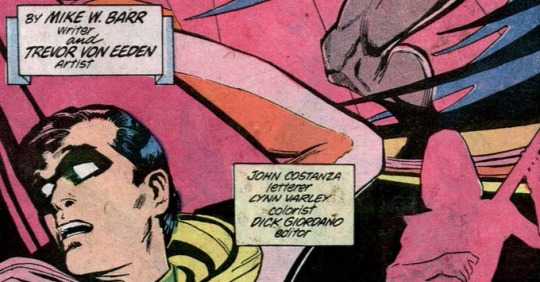
Barr still presented Talia as someone Bruce had feelings for. Enough so that when she left him, Robin knew he'd be hurt by it. And he clearly is since he “needs a moment.”
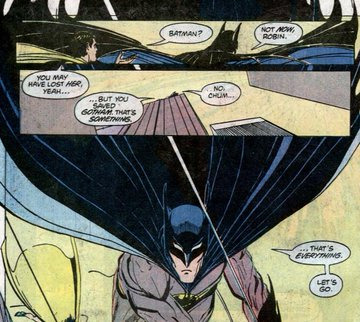
This isn't the only example, even Gerry Conway and famously BatCat friendly Doug Moench used her a few times. Not the most romantic stories to be sure, but she was there, and presented fairly. (Moench also wrote an Elseworlds where Talia and Bruce were married years later, but I left that out of the Twitter post because blah blah Denny was on Batoffice by then. Anyway.)
And then comes the big one...
Son of the Demon. I CANNOT STRESS ENOUGH that Denny had nothing to do with this book. I'm linking an interview with Mike Barr where he explains the whole long story, but I've screencapped some relevant bits below as well.
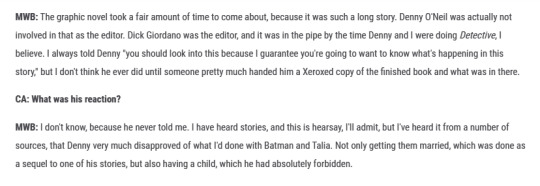
Mike Barr @ Comics Alliance
Barr originally intended the child to come back into play, and yes it WAS originally in continuity. But as far as Barr following Denny O'Neil's agenda, nope. Denny is actually the one who REMOVED Son of the Demon from continuity. I can't find sources on why anymore, but as Barr says above, Denny didn't want them to have married or Batman to have a son.
Also, as someone old enough to remember Zero Hour and be reading newsgroups (RP usenet) at the time, I'll lay down some tea:
After Zero Hour, DC's head editors were permitted to retcon one major continuity element of their properties. This is one of the reasons I've said how often DC retcons depends on what characters you follow, like Wonder Woman got an ENTIRELY new origin, like. Entirely.
Denny's ONE editorial fiat was used removing Son of the Demon from continuity and, if I recall correctly, his reasoning was twofold: He didn't think progressingtheir relationship served the Bruce/Talia dynamic and he didn't think it made sense for Bruce to never notice he had a child, because he's the world's greatest detective and he would have figured it out eventually. As a sidenote, Warner was also pissed about it after Batman became a bigger name post-Miller and Batman '89, whereas when it was approved Batman was still a midlister in danger of losing his second title.
ANYWAY, Denny also went out of his way to establish that Bruce and Talia still can't be together the year after in Detective Annual #1, where he tells Talia he would have to give up who he is to be with her. Which brings me to the next major point....
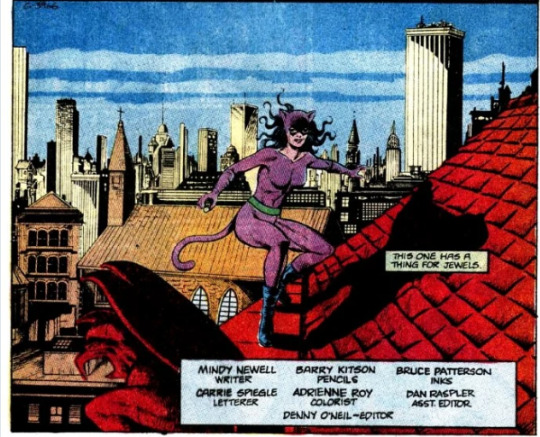
Denny didn't hate Selina. He was one of the first writers to use her after the Comics Code's 14ish year ban of her use. He even used her in his Wonder Woman run. Also it was under his watch that she got her first post-crisis solo stories in Action Comics Weekly, and her first post-Crisis miniseries, Her Sister's Keeper, not to mention her first big solo ongoing, which featured her classic purple catsuit.
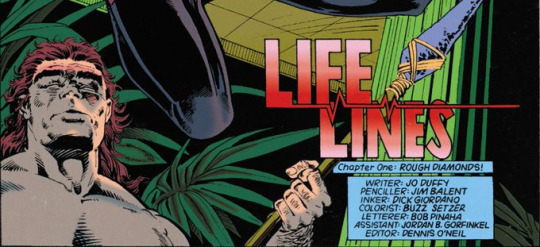
He didn't hate Selina. He never tried to sabotage her.
Maybe he didn't care for BatCat (that’s a literal maybe, I have no idea how he felt about BatCat), but he kept Talia from being with Bruce, too.
What I am saying is, people are mistaking the lack of BatCat in his tenure with his targeting BatCat, but actually, Denny just didn't want Bruce to have a sex life.
Greg Rucka mentions this in another interview, but here's the relevant bit:

Greg Rucka@Comics Alliance
So, in sum: Denny isn't the only one who used Talia as a love interest for Bruce. He didn't hate or sabotage Selina. He maybe?? didn't ship BatCat, but it didn't make a huge difference since he ultimately didn't let anyone give Bruce a substantial romance anyway.
I could frankly talk even more about more silly Denny/Talia/BatCat myths, but my computer lag is, as always, a limiting factor. So, have a fab day and hope you enjoyed Talia Mythbusters Part 1, lmao.
By the way if anyone has specific Talia myths you'd like addressed or researched, feel free to let me know. I've been lazy about this. I did Denny/BatCat stuff first because I knew I could do this more or less from memory+ knew where where the receipts were offhand.
I do have a list but you know, input is great and also if more than one person cares to have one thing looked at, I'll know where to focus my attention.
29 notes
·
View notes
Photo

George Harrison performing at the Royal Albert Hall (1992)
Guitar World Interviews George Harrison (released Jan. 2001 - original interview from 1992)
George Harrison looks back at the days when he played lead guitar in The Beatles, the greatest rock and roll band the world has ever known.
By Vic Garbarini
“So, you’re a real loony too,” laughs George Harrison, with the familiar droll, nasal Scouse (as they call it in Liverpool) accent. “Remember lying in that room all day, needle in your arm, feeling dazed, staring up at that ugly lime green ceiling?”
Well, yes, actually I do. And no, we weren’t shooting dope together in some dive. The lead guitarist of the most important group in rock history is reminding me of when we met a few years back in Dr. Sharma’s clinic in London. Sharma is an M.D. who is also an internationally recognized expert in alternative medicine - in particular, homeopathic and Indian Ayurvedic medicines - and it was these treatments that appealed to Harrison’s Eastern philosophic bent. Her waiting room looked like backstage Live Aid: Tina Turner and members of the Police, Pink Floyd - and of course an occasional Beatle - were drifting in and out. Through Sharma, I’d been promised an interview with George Harrison, and now 10 years later - we were finally sitting down to talk. It was late 1992, and George was promoting Live in Japan (Warner Bros.), the concert album of his 1991 tour with Eric Clapton and the last album he released to date.
So why is this interview finally finding its way to print eight years after the fact? Simple: it was lost. Parts had appeared in Guitar World and other places, but the body of the tape disappeared when the famous 1994 L.A. earthquake turned my apartment into a cosmic Cuisinart. Recently, while I was cleaning out a closet, the long-lost tape literally fell into my lap. The timing couldn’t have been better: All Things Must Pass, Harrison’s superb 1970 solo album, had just recently been issued in a remastered and expanded format. What’s more, the massive Beatles Anthology (Chronicle Books) has once again put the Fabs back in the limelight; but while the book is crammed with minutiae that will fascinate anyone with any interest in the Beatles, it contains little information on how the group created its music, the source of its internal conflicts or how those two elements interacted over the years.
I found that Harrison needed a little prodding before he would discuss the band’s inner turmoil. Once he opened up, though, he gave a most revealing and candid interview in which he expressed his true feelings for his fellow bandmates. Although Harrison was the first lead guitarist to become an equal in a major band (pre-Beatles guitarists like Scotty Moore, from Elvis Presley’s band, were clearly hired guns), he was sandwiched between the two most towering songwriters in rock history - and they often wanted to control his playing - or even do it for him. And of course, getting a decent hearing of his songs was no picnic either.
Perhaps it is for these reasons that Harrison has a reputation as the most dour of Beatles; yet he was witty and upbeat during our talk. He forgave Paul McCartney’s controlling tendencies and John Lennon’s indifference - but, it was clear, he hasn’t forgotten. He seemed emotionally evenhanded, even when angry, balancing the good with the bad and always seeing the positive dimension to all his struggles.
“I’m a Pisces, you know,” he joked. “One half always going back where the other half has been.”
George was also surprisingly willing to talk about the Beatles from the unique perspective of a guitarist as well as that of a composer. He told how he developed a guitar style that combined the music of the Mississippi Delta with that of India’s Ganges Delta, thereby creating his distinctive sound. He spoke of his relationships with Lennon and McCartney: who was more stimulating - and difficult - to work with, and why. He also described how he sneaked Eric Clapton into the studio to rescue one of Harrison’s greatest songs, “While My Guitar Gently Weeps.” And he answered the long-standing questions about whether he was bored during the making of Sgt. Pepper’s.
This may well be the most comprehensive, free-ranging discussion Harrison has ever granted on his years with the Beatles. So, now, here’s the man from the band you’ve known for all these years: Mr. George Harrison.
Guitar World: John Lennon said, “I grew up in Hamburg - not Liverpool.” Is that also true of the Beatles as a group?
George Harrison: Oh, yeah. Before Hamburg, we didn’t have a clue. [laughs] We’d never really done any gigs. We’d play a few parties, but we’d never had a drummer longer than one night at a time. So we were very ropy, just young kids. I was actually the youngest - I was only 17, and you had to be 18 to play in the clubs - and we had no visas. They wound up deporting me after our second year there. Then Paul and Pete Best [the Beatles’ first permanent drummer GW Ed.] got deported for some silly reason, and John just figured he might as well come home. But when we went there, we weren’t a unit as a band yet. When we arrived in Hamburg, we started playing eight hours a day - like a full workday. We did that for a total of 11 or 12 months, on and off over a two year period. It was pretty intense.
GW: Paul McCartney told me that playing for those drunken German sailors, trying to lure them in to buy a couple of beers so you could keep your gig, was what galvanized the band into a musical form.
HARRISON: That’s true, because we were forced to learn to play everything. At first, we played music of all our heroes - Little Richard, Fats Domino, Chuck Berry, Buddy Holly, the Everly Brothers, Ray Charles, Carl Perkins - anything we’d ever liked. But we still needed more to fill those eight-hour sets. Eventually we had to stretch and play a lot of stuff that we didn’t know particulary well. Suddenly, we were even playing movie themes, like “A Taste of Honey” or “Moonglow,” learning new chords, jazz voicings, the whole bit. Eventually, it all combined together to make something new, and we found our own voice as a band.
GW: I can see how all this musical stretching gave you the tools to eventually create your own unique sound. But it’s hard to believe drunken sailors would want to hear movie ballads.
HARRISON: No, we played those things because we got drunk! If you’re coming in at three or four in the afternoon with a massive hangover from playing all night on beer and uppers, and there’s hardly anybody in the club, you’re not going to feel like jumping up and down and playing “Roll Over Beethoven.” You’re going to sit down and playing something like “Moonglow.” And we learned a lot from doing that.
GW: Did those tight, Beatles vocal harmonies also come out of Hamburg?
HARRISON: We always loved those American girls groups, like the Shirelles and the Ronettes. So yeah, we developed our harmonies from trying to come up with an English, male version of their vocal feel. We discovered the option of having three-part harmonies, or lead vocal and two-part backup, from doing that old girl-goup material. We even covered some of those songs, like “Baby, It’s You,” on our first album.
GW: When you broke through in America, Carl Perkins and Scotty Moore, Elvis’ guitarists, were clearly your main influences as a guitarist. And, like them, you were using a Gretsch guitar. What was it about that rocka-billy style that captivated you?
HARRISON: Carl was playing that simple, amazing blend of country, blues and early rock, with these brilliant chordal solos that were very sophisticated. I heard his version of “Blue Suede Shoes” on the radio the other day, and I’ll tell you, they don’t come more perfect than that. Later, when we met Carl, he was such a sweet fellow, a lovely man. I did a TV special with him a couple of years ago and I used the Gretsch Tennessean again for that, the one I like to call the Eddie Cochran/Duane Eddy model. And you have to understand how radical that sound was at the time. Nowadays, we have all this digital stuff, but the records of that period had a certain atmosphere. Part of it was technical: the engineer would have to pot the guitar [adjust its level and tone] up and down or whatever. It was a blend that was affected by the live “slap echo” they were using. I loved that slap bass feel - the combination between the bass, the drum and the slap, and how they would all come together to make that amazing sound. We used to think that the drummer must be drumming on the double bass’ strings to get that slap back - we just couldn’t figure it out.
GW: The other major factor in your playing was Chuck Berry. I remember being a kid and hearing you do “Roll Over Beethoven” and thinking it was a Beatles song. We never heard black artists on the radio in those days.
HARRISON: Oh, that’s still happening. We did a press conference in Japan when I played live there with Eric Clapton [in 1991], and the first question was, “Mr. Harrison, are you going to play ‘Roll Over Beethoven’ in concert?” And when I said yes, the whole hall stood up and applauded! It was such a big thing for them, which seemed so funny. Then I realized they must still think I wrote it.
GW: Going back to the Beatles’ early touring days, Ringo Starr told me that you all gave up on playing live because you literally couldn’t hear each other, due to all the screaming and the primitive amplification.
HARRISON: We couldn’t hear a thing. We were using these 30-watt amps until we played Shea Stadium, at which point we got those really big 100-watt amps. [laughs] And nothing was even miked up through a P.A. system. They had to listen to us just through those tiny amplifiers and the vocal mikes.
GW: Did you ever give up and just mime?
HARRISON: Yeah, sometimes we used to play absolute rubbish. At Shea Stadium, [during “I’m Down,”] John was playing a little Vox organ with his elbow. He and I were howling with laughter when we were supposed to be doing the background vocals. I really couldn’t hear a thing. Nowadays, if you can get a good balance on your monitors, it’s so much easier to hear your vocals and stay in pitch. When you can’t hear your own voice onstage, you tend to go over the top and sing sharp - which we often did back then.
GW: The Beatles stopped touring in 1966 around the time of Revolver. That album was a quantum leap in terms of the band’s playing and songwriting. Rock could now deal with our inner lives, alienation, spirituality and frustration, things which it had never dealt so directly with before. And the guitars and music warped into a new dimension. What kicked that off? Was it Dylan, the Byrds, Indian music and philosophy?
HARRISON: Well, all of those things came together. And I think you’re right, around the time of Rubber Soul and Revolver we just became more conscious of so many things. We even listened deeper, somehow. That’s when I really enjoyed getting creative with the music - not just with my guitar playing and songwriting but with everything we did as a band, including the songs that the others wrote. It all deepened and became more meaningful.
GW: Dylan inspired you guys lyrically to explore deeper subjects, while the Beatles inspired him to expand musically, and to go electric. His first reaction on hearing the Beatles was supposedly, “Those chords!” Did you ever talk to him about the way you influenced each other?
HARRISON: Yes, and it was just like you were saying. I was at Bob’s house and we were trying to write a tune. And I remember saying, “How did you write all those amazing words?” And he shrugged and said, “Well, how about all those chords you use?” So I started playing and said it was just all these funny chords people showed me when I was a kid. Then I played two major sevenths in a row to demonstrate, and I suddenly thought, Ah, this sounds like a tune here. Then we finished the song together. It was called “I’d Have You Anytime,” and it was the first track on All Things Must Pass.
GW: Paul told me that Rubber Soul was just “John doing Dylan.” Do you think Dylan felt that?
HARRISON: Dylan once wrote a song called “Fourth Time Around.” to my mind, it was about how John and Paul, from listening to Bob’s early stuff, had written “Norwegian Wood.” Judging from the title, it seemed as though Bob had listened to that and wrote the same basic song again, calling it “Fourth Time Around.” The title suggests that the same basic tune kept bouncing around over and over again.
GW: The same cross-fertillization seemed to be going on between the Beatles and the Byrds around that time. Your song “If I Needed Someone” has got to be a tip of the hat to Roger McGuinn, right?
HARRISON: We were friends with the Byrds and we certainly liked their records. Roger himself said that the first time he saw a Rickenbacker 12-string was in A Hard Day’s Night, and he certainly stamped his personality onto that sound later. Wait - I’ll tell you what it was. Now that I’m thinking about it, that song actually was inspired by a Byrds song, “The Bells of Rhymney.” Any guitar player knows that, with that open-position D chord, you just move your fingers around and you get all these little maladies…I mean melodies! Well, sometimes maladies [laughs] And that became a thrill, to see how many more tunes you could write around that open D, like “Here Comes the Sun.”
GW: When you did that tour with Eric Clapton in Japan, you opened with “I Want to Tell You,” from Revolver. The song marked a turning point in your playing, and in the history of rock music writing. There’s a weird, jarring chord at the end of every line that mirrors the disturbed feeling of the song. Everybody does that today, but that was the first time we’d heard that in a rock song.
HARRISON: I’m really pleased that you noticed that. That’s an E7th with an F on the top, played on the piano. I’m really proud of that, because I literally invented that chord. The song was about the frustration we all feel about trying to communicate certain things with just words. I realized the chords I knew at the time just didn’t capture that feeling. So after I got the guitar riff, I experimented until I came up with this dissonant chord that really echoed that sense of frustration. John later borrowed it on Abbey Road. If you listen to “I Want You (She’s So Heavy)” it’s right after John sings “it’s driving me mad!” To my knowledge, there’s only been one other song where somebody copped that chord - “Back on the Chain Gang” by the Pretenders.
GW: Around the time of Rubber Soul and Revolver, you met Ravi Shankar and went to India to study Indian classical music, which is full of microtonal slurs and blends. When you came back, your guitar playing became more elastic, yet very precise. You were finding more notes between the cracks, like you can in Indian music - especially on your slide work. Is there a connection there?
HARRISON: Sure, because whatever you listen to has to come out in some way or other. I think Indian music influenced the inflection of how I played, and certain things I play certainly have a feel similar to the Indian style. As for slide, I think most people - Keith Richards for example - play block chords and all those blues fills, which are based on open tunings. My solos are actually like melodic runs, or counter melodies, and sometimes I’ll add a harmony line to it as well.
GW: Like on “My Sweet Lord” and the songs on your first solo album [All Things Must Pass].
HARRISON: Exactly. Actually, now that you’ve got me thinking about my guitar playing Indian music, I remember Ravi Shankar brought an Indian musician to my house who played classical Indian music on a slide guitar. It’s played like a lap steel and set up like a regular guitar, but the nut and bridges are cranked up, and it even has sympathetic drone strings, like a sitar. He played runs that were so precise and in perfect pitch, but so quick! When he was rocking along, doing these really fast runs, it was unbelievable how much precision was involved. So there were various influences. But it would be precocious to compare myself with incredible musicians like that.
GW: When you came back from India, did you intentionally copy on guitar any of the techniques you learned there?
HARRISON: When I got back from this incredible journey to India, we were about to do Sgt. Pepper’s, which I don’t remember much at all. I was into my own little world, and my ears were just all filled up with all this Indian music. So I wasn’t really into sitting there, thrashing through [sings nasally] “I’m fixing a hole…” Not that song, anyway. But if you listen to “Lucy in the Sky with Diamonds,” you’ll hear me try and play the melody on guitar with John’s voice, which is what the instrumentalist does in Hindustani vocal music.
GW: Paul told me you wanted to do a similar thing on “Hey Jude,” to echo his vocal phrases on the guitar, and that he wouldn’t let you. He admitted that incidents like that were one of the causes of the band’s breakup. And Ringo said you had the toughest job, because Paul in particular and George Martin as well would sometimes try and dictate what you should play, even on your solos.
HARRISON: Well, you know, that’s okay. I don’t remember the specifics on that song. [pauses] Look, the thing is, so much has been said about our disagreements. It’s like…so much time has lapsed, it doesn’t really matter anymore.
GW: Was Paul trying to just hold the band together, or was he just becoming a control freak? Or was it a little of both?
HARRISON: Well…sometimes Paul “dictated” for the better of a song, but at the same time he also pre-empted some good stuff that could have gone in a different direction. George Martin did that too. But they’ve all apologized to me for all that over the years.
GW: But you were pissed off enough about all this to leave the band for a short time during the Let It Be sessions. Reportedly, this problem had been brewing for a while. What was it that upset you about what Paul was doing?
HARRISON: At that point in time, Paul couldn’t see beyond himself. He was so on a roll - but it was a roll encompassing his own self. And in his mind, everything that was going on around him was just there to accompany him. He wasn’t sensitive to stepping on other people’s egos or feelings. Having said that, when it came time to do the occasional song of mine - although it was usually difficult to get to that point - Paul would always be really creative with what he’d contribute. For instance, that galloping piano part on “While My Guitar Gently Weeps” was Paul’s, and it’s brilliant right to this day. On the Live in Japan album, I got our keyboardist to play it note for note. And you just have to listen to the bass line on “Something” to know that, when he wanted to, Paul could give a lot. But, you know, there was a time there when…
GW: I think it’s called being human - and young.
HARRISON: It is…[sighs] It really is.
GW: How difficult was it to squeeze your songs in between the two most famous writers in rock?
HARRISON: To get it straight, if I hadn’t been with John and Paul I probably wouldn’t have thought about writing a song, at least not until much later. They were writing all these songs, many of which I thought were great. Some were just average, but, obviously, a high percentage were quality material. I thought to myself, If they can do it, I’m going to have a go. But it’s true: it wasn’t easy in those days getting up enthusiasm for my songs. We’d be in a recording situation, churning through all this Lennon/McCartney, Lennon/McCartney, Lennon,/McCartney! Then I’d say [meekly] can we do one of these?
GW: Was that true even with an obviously great song like “My..uh.”
HARRISON: "Piggies”? You mean “While My Piggies Gently Weep”? [laughs] When we actually started recording “While My Guitar Gently Weeps” it was just me playing the acoustic guitar and singing it [This solo version appears on the Anthology 3 CD-GW Ed.] and nobody was interested. Well, Ringo probably was, but John and Paul weren’t. When I went home that night, I was really disappointed, because I thought, Well, this is really quite a good song, it’s not as if it’s shitty! The next day, I happened to drive back into London with Eric Clapton, and while we were in the car I suddenly said, “Why don’t you come and play on this track?” And he said, “Oh, I couldn’t do that. The others wouldn���t like it.”
GW: Was that a verboten thing with the Beatles?
HARRISON: Well, it wasn’t so much verboten; it’s just that nobody had ever done it before. We’d had oboe and string players and other session people in for overdubbing, but there hadn’t really been other prominent musicians on our records. So Eric was reluctant, and I finally said, "Well, sod them! It’s my song and I’d like you to come down to the studio.”
GW: So did that cause more tension with the others? How did they treat him?
HARRISON: The same thing occurred that happened during “Get Back,” while we were filming the movie [Let It Be, (Apple Films) 1970]. Billy Preston came into our office and I pulled him into the studio and got him on electric piano. And suddenly, everybody started behaving and not fooling around so much. Same thing happened with Eric, and the song came together nicely.
GW: Yet, rumor has it you weren’t satisfied with your performance on the record. Why?
HARRISON: Actually, what I was really disappointed with was take number one [i.e., the solo version]. I later realized what a shitty job I did singing it. Toilet singing! And that early version has been bootlegged, because Abbey Road Studios used to play it when people took the studio tour. [laughs] But over the years I learned to get more confidence. It wasn’t so much learning the technique of singing as it was just learning not to worry. And my voice has improved. I was happy with the final version with Eric.
GW: Did you give Eric any sense of what you wanted on the solo? He almost sounds as if he’s imitating your style a lot.
HARRISON: You think so? I didn’t feel like he was copying me. To me, the only reason it sounds Beatle-ish is because of the effects we used. We put the “wobbler” on it, as we called ADT. [Invented by a Beatles recording engineer. ADT, or artificial double tracking, was a tape recording technique that made vocals and intruments sound as if they had been double tracked (i.e., recorded twice) to create a fuller sound. The technique also served as the basis for flanging.-GW Ed.] As for my direction I may have given him, it was just, “Play, me boy!” In the rehearsals for the Japanese tour, he did make a conscious effort to recap the solo that was on the original Beatles album. And although the original version in embedded in Beatles’ fans memories, I think the version we captured on the live album is more outstanding.
GW: Want to play rock critic for us and critique his playing?
HARRISON: Ah, well, he started out playing the first couple of fills like the original, and the first solo is kind of similar. But by the end of the solo he just goes off! Which is why I think guitar players like to do that song. It’s got nice chords, but it’s also structured in a way that gives a guitar the greatest excuse just to wail away. Even Eric played it differently every night of the tour. Some nights he played licks that almost sounded like flamenco. But he always played exceptionally well on that song.
GW: You talked about the pluses and minuses of working with Paul. What about John? He was a much looser, more intuitive musician and composer. Did you help him flesh things out?
HARRISON: Basically, most of John’s songs, like Paul’s, were written in the studio. Ringo and me were there all the time. So as the songs were being written, they were being given ideas and structures, particularly by John. As you say, John had a flair for “feel.” But he was very bad at knowing exactly what he wanted to get across. He could play a song and say, “It goes like this.” Then he’d play it again and ask, “How does that go?” Then he’d play it again - totally differently! Also his rhythm was very fluid. He’d miss a beat, or maybe jump a beat…
GW: Like a lot of old blues players.
HARRISON: Exactly like that. And he’d often do something really interesting in an early version of a song. After a while, I used to make an effort to learn exactly what he was doing the very first time he showed a song to me, so if the next time he’d say, “How did that go?” we’d still have the option of trying what he’d originally played.
GW: The melody on side two of Abbey Road is a seamless masterpiece. It would probably take a modern band ages to put together, even with digital technology. How did you manage all that with just four - and eight - track recorders?
HARRISON: We worked it all out carefully in advance. All those mini songs were partly completed tunes; some were written while we were in India a year before. So there was just a bit of chorus here and a verse there. We welded them all together into a routine. Then we actually learned to play that whole thing live. Obviously there were overdubs. Later, when we added the voices, we basically did the same thing. From the best of my memory, we learned all the backing tracks, and as each piece came up on tape, like “Golden Slumbers,” we’d jump in with the vocal parts. Because when you’re working with only four or eight tracks, you have to get as much as possible on each track.
GW: With digital recording today you can also do an infinite number of guitar solos. Back then, did taking another pass at a solo require redoing almost the entire song?
HARRISON: Almost. I remember doing the solo to “Something” and it was dark in the studio and everyone was stoned. But Ringo, I think, was doing a drum overdub on the same track, and I seem to remember the others were all busy playing. And every time I said, “Alright, let’s try another take” - because I was working it out and trying to make it better - they all had to come back and redo whatever they’d just played on the last overdub. It all had to be squeezed onto that one track, because we’d used up the other seven. That’s why, after laying down the basic track, we’d work out the whole routine in advance and get the sound and balance. You’d try and add as much as possible to each track before you ran out of room. On one track we might go, “Okay, here the tambourine comes in, then Paul, you come in at the bridge with the piano and then I’ll add the guitar riff.” And that’s the way we used to work.
GW: “Something” was your most successful song. I think every guitar player wonders, did you get that riff first?
HARRISON: No, I wrote the song on the piano. I don’t really play the piano, which is why certain chords sound brilliant to me - then I translate them onto the guitar, and it’s only C. [laughs] I was playing three-finger chords with my right hand and bass notes with my left hand. And on the piano, it’s easy to hold down one chord and mostly the bass note down. If you did that on the guitar, the note change wouldn’t come in the bass section; it would come somewhere more in the middle of the chord.
GW: But you did play that Beatles-sounding bridge riff in “Badge” on Cream’s Goodbye album, didn’t you?
HARRISON: No, Eric played that! He doesn’t even play on the song before that. We recorded that track in L.A.: it was Eric, plus Ginger Baker and Jack Bruce, and I think the producer, Felix Pappalardi, played the piano part. I was just playing chops on the guitar chords and we went right through the second verse and into the bridge, which is where Eric comes in. Again, it sounds Beatle-ish because we ran it through a Leslie speaker.
GW: Any contemporary bands that strike you as having a bit of the same spark that your early heroes had?
HARRISON: I can’t say I’ve really heard anything that gives me a buzz like some of that stuff we did in the Fifties and Sixties. The last band I really enjoyed was Dire Straits on the Brothers in Arms album. To me, that was good music played well, without any of the bullshit. Now I’m starting to get influenced by my teenage son, who’s into everything and has the attitude. He loves some of the old stuff, like Hendrix, and he’s got a leather jacket with Cream’s Disraeli Gearsalbum painted on the back. As for recent groups, he played me the Black Crowes, and they really sounded okay.
GW: You made music that awoke and changed the world. Could you sense that special dimension of it all while it was happening, or were you lost in the middle of it?
HARRISON: A combination of both, I think. Lost in the middle of it - not knowing a thing - and at the same time somehow knowing everything. Around the time of Rubber Soul and Revolver it was like I had a sudden flash, and it all seemed to be happening for some real purpose. The main thing for me was having the realization that there was definitely some reason for being here. And now the rest of my life as a person and a musician is about finding out what that reason is, and how to build upon it.
GW: Finally, any recent acid flashbacks you care to share?
HARRISON: [laughs] No, no, that doesn’t happen to me anymore. I’ve got my own cosmic lighting conductor now. Nature supports me.
#george harrison#john lennon#paul mccartney#ringo starr#the beatles#guitar world#eric clapton#bob dylan#ravi shankar#dhani harrison#carl perkins#scotty moore#the ronettes#the shirelles#rubber soul#revolver#sgt pepper#the white album#abbey road#let it be#all things must pass#1992#2001#hamburg days#live in japan#george and john#paul and george#george and ringo
274 notes
·
View notes
Text
Another CHIKARA weekend is upon us! As Aniversario is a two-day event, I’m going to do a two-in-one preview of what is currently set, starting with part one, The Apes of Wrath. In what is likely the main event, we have a small reunion of one half of the COTI team Dasher’s Dugout, as Grand Champion Dasher Hatfield teams with Icarus of F.I.S.T. against the rather surprising team of Princess Kimberlee and John Francis of Coronado. Guess Kim can’t escape from the weird teams, can she? Having been utterly trampled by Der Wildebeest earlier this month, Missile Assault Man looks to once again get back into the point standings. Unfortunately for him, so’s Hallowicked. This should be an interesting one. Still Life’s YLC reign has been one of the most successful in recent memory, already surpassing a good chunk of previous champions in successful defenses. Their fourth defense comes against Green Ant, and if successful, they will surpass yet more champions and tie Hallowicked, Jigsaw, and Tim Donst at the four defense mark. (Frightmare currently holds the record at seven successful defenses.) Molly McCoy makes her non-Infinite Gauntlet debut, teaming with cousin Boomer to face Hermit Crab and Merlok of the Creatures of the Deep. Since she seemed to avoid the conflict between father and son back at the IG, I’ve gotta wonder if she’ll be taking sides after all. Longtime indie mainstay Jason Gory (who I’m sure will be toned down a bit from his usual antics) makes his debut, taking on Travis Huckabee of F.I.S.T. Speaking of debuts, Trey Miguel and Zachary Wentz of the Rascalz will be stopping in to mix it up with Cornelius Crummels and Sonny DeFarge. Should be fab. Finally, Lady Frost, who made her debut earlier this year as a replacement competitor in the YLC tournament, returns to take on BLANK. With BLANK’s recent history of not faring well against blonde women, this might not end well for him yet again. Next, Scotch Mist. In the main event, the heated rivalry between father and son will (hopefully) be settled, as Dasher and Boomer Hatfield go to war in a non-title Lucha de Apuesta, with the loser giving up his mask. Who knows how this one will end? Will Dasher give up the identity he was stuck with after a certain incident involving the much-missed Gavin Loudspeaker, or will he force his own son to relinquish the family legacy? The members of the Minnesota Wrecking Zoo are returning! Thunderfrog, Wildcat, and Air Wolf are set to face off against the full might of the Proteus Wheel. The Wheel seem to have gotten a big ol’ nerf since the ghosts of the organization’s past defeated them, can they recover and take the first step to recovering past glory, or will the animals run wild? Here’s an interesting one. The Whisper, fresh off the reveal of his involvement with the Crucible, squares off with John Francis. Maybe this might be how Ophidian sneaks his resources in? Solo Darling, no doubt looking to get back into the standings, takes on the man who can be seen as partially responsible for the corruption of her ex-tag partner Travis Huckabee, Icarus. The unlikely duo of Lucas Calhoun and Stray Kat, having previously earned two points, challenge the commuting duo of Arik Cannon and Darin Corbin for that third point and the right to be the first challengers for reigning Campeones Travis Huckabee and Tony Deppen of F.I.S.T. for the Campeonatos de Parejas. Finally, after quite a looooooong time, Da Soul Touchaz (who I honestly thought had broken up a while back) make their return to face Merlok, Hermit Crab, and Cajun Crawdad of the Creatures of the Deep. Additionally, as I’ve mentioned above, Ophidian has petitioned DoF Bakabella to allow the Crucible to have a showcase of sorts during Aniversario weekend. As Bakabella refuses to take a stance in the recent conflict between Ophidian and Mike Quackenbush, it’s entirely possible he may sneak something in during either event. The Whisper’s match is most likely, but who knows?
1 note
·
View note
Link
1 note
·
View note
Text
We drafted basketball teams made up of ‘Star Wars’ characters. Which is best?
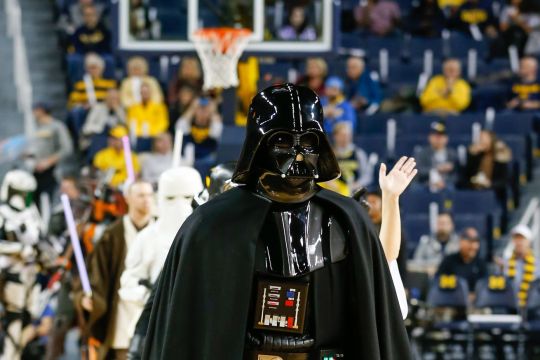
Was the Force with any of us as we made our picks?
A short time ago in a galaxy very close to here, the Skywalker saga reached its conclusion with the release of Star Wars: The Rise of Skywalker. Episode IX maybe the finale of the series’ third movie trilogy, but it’s far from the end of Star Wars as we know it, thanks to the limitless runway Disney+ offers and the overwhelming desire for nostalgia that is Hollywood today. (Give it a decade before we get the beginning of another movie trilogy). But it still marks a pivotal turning point for those of us invested in the saga.
So to celebrate, five diehard sports and Star Wars fans came together to do something (long pause) truly special: draft a five-man basketball team to take down a crew of alien ballers hiding out in the Unknown Regions.
There will be a substantial reward for the team who defeats these invaders. Managers were free to use any draft methods necessary, but we want this to be a fair fight. No superteams.
So, we laid out some important ground rules:
Only one Force-wielder — i.e. Jedi, Sith, etc — per team.
Only one droid per team. (Though one of the teams doesn’t have a droid).
Each team must possess at least one sentient alien. Unlike the Empire, who looked down on non-humans, we don’t discriminate.
All Star Wars canon can be considered, and by all, we mean all. (No Legends canon, though). Because of that, we made use of lots of characters from the many animated shows, The Mandalorian, and other side projects. We took this very seriously.
We’re building an actual basketball team, so chemistry matters. As the old basketball saying goes, there’s only one thermal detonator.
Those guidelines — particularly the one limiting everyone to just one force user— made for a fascinating draft. Here’s how it played out.
Allow everyone to explain themselves.
The Slamdoshans (Tyson Whiting)
PG: Ahsoka Tano (Force user) SG: L3-37 (droid) SF: General Grievous PF: Bossk (alien) C: Sarlacc COACH: General Armitage Hux
With the guidelines in place for the draft, I wanted to make sure I picked a team with players who would bend the rules as much as possible.
Some might find it “unfair” that I have two lightsaber-wielding players on my team. To be clear, Grievous may have lightsabers, but he is not a Force user. Plus, though he is mostly machine, he is technically of the Kaleesh race, therefore making him an alien pick. (My masters degree in Star Wars is already paying off). His four arms and ability to turn into a weird spider thing has the potential to surprise opposing players.
I was criticized at the time for choosing Ahsoka Tano over a Skywalker as my Force user, but she was trained by Anakin Skywalker, so she knows all his moves. She’s a great leader and showed her craftiness in tight situations during the Clone Wars.
youtube
L3-37 and Bossk are my sleeper picks of chaos. L3 will-trash talk you into submission, though I might have a problem with her on Twitter. I picked up Bossk’s nasty 7-foot-tall ass because he will walk through you, hissing and spitting while he does. I also assume he has incredible ball control with those three-finger hands.
So the Sarlacc. I know what you’re thinking: yes, I AM a genius. Sure, he (it?) can’t move, set a pick, or really leave the ground in any way. But stick this bad boy under the net and you’ll never surrender a layup or rebound EVER AGAIN.
Also Coach Hux will hit you so hard with those pregame speeches that you’ll have no choice but to win.
Tosche Station Power Converters (Caroline Darney)
PG: Cassian Andor SG: Lando Calrissian SF: The Mandalorian PF: Anakin Skywalker/Darth Vader (Force user) C: Chewbacca (alien) COACH: Orson Krennic
Look at this perfect squad. Getting Chewbacca with my first-round pick (No. 2 overall) was clutch, and his big frame will dominate in this league. Anakin/Vader was a steal in the fourth round, and this is Rogue One peak-condition Darth Vader. His rage may lead to some bad fouls, but he’s been instructed not to force choke the refs.
youtube
I decided to lock down a pair of sharpshooters on the wings in the form of Lando Calrissian (Solo’s Donald Glover version) and the Mandalorian (affectionately known as Mando). They can run off of screens set by either big man (seriously, the screens are going to be so beautiful), and are both catch-and-shoot players. Mando’s inability to take his helmet off could get in the way at times, but his support of Baby Yoda makes it all worth it. Also, imagine the fits Lando will wear walking into the arena before the game. The capes! So many capes and furs!
To bring it all together, I needed the ultimate team player running the point. Enter Rogue One’s Cassian Andor. Quick, resourceful, and full of the intangibles coaches love, Andor is the perfect distributor for this squad. He doesn’t care about personal stats, but he will come through in the clutch if he has to get a last-minute bucket.
I know there may be questions about Director Krennic running the squad, but he’s here solely for the perfect quotes. Just imagine: when the defense is lacking, Krennic can hit them with “Are we blind? Deploy the garrison!” When my team wins the title, you can already hear him saying, “As we stand here amidst MY achievements.” Or, if his job is in question, hitting ownership with “your concerns are hardly warranted.”
But let’s be real. Vader is the player-coach of this team.
youtube
Dooku Blue Devils (James Dator)
PG: Yoda (Force user) SG: Greedo (alien) SF: Boba Fett PF: K2-SO (droid) C: Rathtar COACH: Watto
How did they sleep on this roster? The fools. The intergalactic fools. I’ve got Yoda running the point as my Muggsy Bogues-esque hero and distributor. I wanted my Force user touching the ball every single possession, and this was the best way to do it.
From there, I wanted to lock down the paint. I have some big basketball beasts as my enforcers. K2-SO is 7’1, and Rathtar has as astonishing 20-foot wingspan thanks to its tentacles, which will be too much for most teams to overcome.
The secret to my team is Greedo. I needed offense, and everyone knows his love of shooting first. (Editor’s Note: Please strike the end of that sentence from the record). If he needs to be kept in line, I have complete faith in Boba Fett’s “game respect game” bounty hunter familiarity.
Finally, I picked Watto to be my coach because I want a merciless cheater.
Project Harvester (Mike Prada)
PG: Bo-Katan Kryze SG: Sheev Palpatine (Force user) SF: IG-88 (droid) PF: Captain Phasma C: Jabba The Hutt (alien) COACH: Grand Admiral Thrawn
My toughest decision came in the first round. Do I wait on picking my Force user and build up the rest of the team, or do I just bite the bullet and take the most powerful being in the galaxy, personality issues and all? In the end, I gave in to my hate. Talent trumps character.
After that, I couldn’t take any good guys because there’d be obvious philosophical clashes. Jabba’s ego makes him a risky pick, but I’m gambling that he’ll be fine protecting the paint if Palpatine gives him a few post touches. IG-88 and Phasma are quality 3-and-D wings that’ll take on the tough assignments, and Thrawn is a master tactician who has the star’s trust. Point guard was tricky, but Bo-Katan has the versatility to play a secondary role while not being afraid to challenge the star if he steps slightly too far out of line. (I hope she has more respect for Palpatine than she did for Maul in Clone Wars).
Palpatine will take all the shots, which isn’t ideal. But hey, it works for the Rockets.
The Bombads (Russ Oates)
PG: R2-D2 (droid) SG: Rey (Force user) SF: Jar Jar Binks (alien) PF: Cara Dune C: Wampa COACH: Admiral Ackbar R2-D2 is the true hero of the Star Wars saga and always knows what to do in a tight spot. He’d be an excellent floor general on the court. While she is new to the Force, Rey keeps picking up points and has been able to disrupt the First Order’s offense. Cara Dune is a former New Republic shock trooper, so yeah, she’s going to grab all the rebounds. Better watch out for the claws on the Wampa, or you’ll be sorry. Admiral Ackbar can spot a trap by the opposing team.
youtube
Y’all can hate on the Jar Jar Binks pick if you want. I’ll accept the creative destruction he will cause on the court.
Which team are you taking to address this looming threat in the Unknown Regions? Vote in the poll below. The winner gets the full bounty. The loser is stuck with a bunch of useless tracking fabs. (Click here if you can’t see the poll).
0 notes
Text
Married with Children: Paul (Bonehead) Arthurs
Paul Arthurs also known as Bonehead, who played rhythm guitar and sometimes keyboards, was born on June 23, 1965 in Manchester, England. He received the nickname of Bonehead at the age of 8 because his parents always made the future Oasis member get very short haircuts. He would later say, “It was only my mum and dad throughout my life, really, that called me Paul.” At the age of 16, Bonehead dropped out of school working as a plasterer. He founded his first band Pleasure and Pain in 1984 as he met his future wife Kate around this same time. Later in the same decade, he joined the band Rain, which included Paul "Guigsy" McGuigan, Tony McCarroll, and Chris Hutton. Singer Hutton would be replaced by Liam Gallagher, which eventually became Oasis. In the beginning, Bonehead co-wrote songs with Gallagher, but their output proved unsuccessful leading to Noel Gallagher being asked to join the group. He would later admit that upon hearing Noel play “Champagne Supernova” for the first time he actually began to cry. Arthurs would later say that his favorite song to play was “Columbia” from Definitely Maybe. Another instrument that the guitarist played was mellotron, which can be heard on What’s The Story Morning Glory. A bonus track on that same album was named after him, “Bonehead’s Bank Holiday.” Originally, he was to sing lead vocals, but at the last minute Noel stepped in as the singer for that track. In 1999 while recording Standing on the Shoulders of Giants, Bonehead left Oasis. The official statement said that he wanted to spend more time with his family including his two young children. Noel being Noel would say about his departure, “It’s hardly Paul McCartney leaving the Beatles.” He would later soften his harsh stance respecting Arthurs’s decision to make family a priority and thanked him for his effort while in the band.
Currently, Bonehead lives in Manchester with a recording studio underneath his house. He formed the band Johnny and the Moondogs with The Smiths' Mike Joyce and Andy Rourke. The band name has a Beatles connection being one of the names the Fab Four used before deciding on the Beatles. In 2007, the guitarist played live at the Versus Cancer benefit concert marking the first time since his days with Oasis. The two song set also featured members of the group, Happy Mondays. Arthurs has also more recently performed the role of dj in local clubs featuring a few Oasis cuts and collaborations with Noel, Death in Vegas, and the Chemical Brothers. He has also released solo music including a project with Vinny Peculiar entitled Parlour Flames released in the spring of 2013. Another collaboration with Alex Lipinski saw the release of an EP in 2014. In 2013 and 2014, Bonehead stood in as guitarist for Beady Eye due to Gem Archer recovering from a head injury. This represented the first time he and Liam Gallagher had been on the same stage since his departure from Oasis.He would even step in to play on Gallagher’s later solo album, As You Were' on tracks “Bold” and “For What It’s Worth.” He would later join Gallagher’s band for a few appearances while on tour including an opening slot for the Rolling Stones at London Stadium in 2018. Another notable appearance came when he joined Gallagher on stage with Richard Ashcroft and his son for a performance of “Live Forever” at Old Trafford in Manchester. Most recently, he joined Liam on stage for his set at the Reading and Leeds Festival in 2021. The musician has surprisingly used the same Matsumoku Epiphone Riviera from 1982 first used throughout his time in Oasis up to the present day.

1 note
·
View note
Text
Big Island Splash, Mash, Dash!
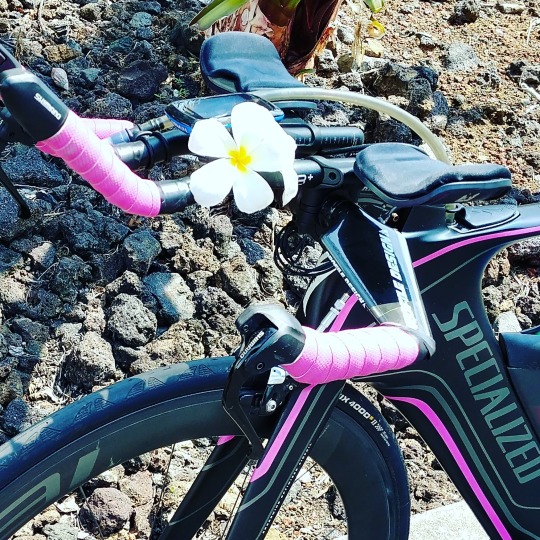
Belated Aloha, forgive me for taking two weeks to write this!
I thought we had landed on the moon as I descended the plane stairs onto the island of black volcanic rubble. After nine plus hours of flying I had arrived at Triathlon Mecca, Kona, a little town on a wisp of land in the middle of a massive ocean, noisy with wind and hot as hades.
Hawaii is halfway between Sydney and Chicago so provided the perfect location for a rendezvous with my Dad whom I had not seen for over a year. (Aww, thanks for coming and sharing this with me Dad. ×××)
“Downtown” Kona is small and super cute but that week was COMPLETELY overrun with compression-wear trussed, trucker hat clad, slightly weather beaten, uber athletic types. I almost fit right in.
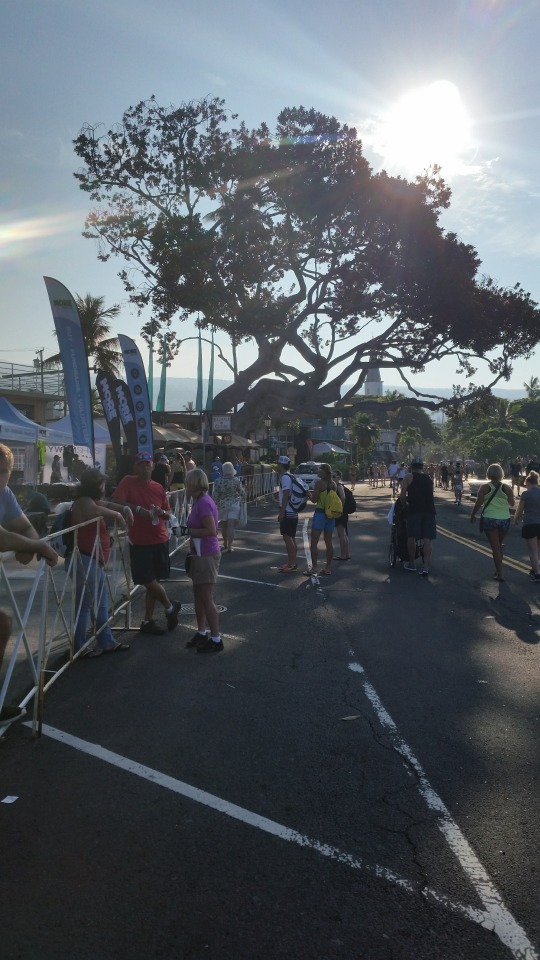
I was pleased to get up and out of the hype on my first night, having a home cooked meal with my dear friends Ben and Lillian at their B&B located on a flower farm way above Kona. Ben and Lillian are a fab couple I met running in Jersey City. I laughed off their prediction back in 2013 after my first 70.3 that I would one day race at Kona, thinking of course that will never happen because I will NEVER do an Ironman. I was beyond flattered to receive a message from these guys on my return home from IM Texas with my IMWC slot secured, telling me that they had booked their flights to Kona! Just wow.
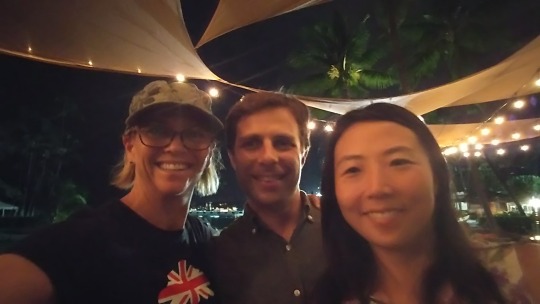
At the suggestion of a friend I had signed up for the big charity Underpants run. Yes! Why not? It is for charity, I figured that if I had to endure running along behind ironmen in their tighty whities, well it would be worth it, for the charity of course. I wore a pair of huge granny dacks sporting a kangaroo waving an Aussie flag on the butt and dragged my poor Dad to the start line. He did not run, just observed… (that sounds way more creepy that it really was.) I met up with some friends Mike, a seasoned Kona participant and Jeff a green Kona rookie just like me.
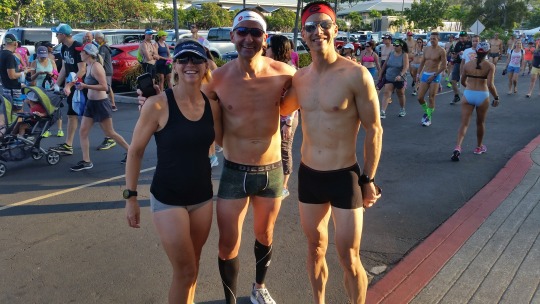
We had a hoot, Mike and Jeff were happy to be stuck behind the Coeur Team girls, how shallow, I mean really? Post run “analysis” and breakfast at Evolution hit the spot. Oh a tip for Underpants Run rookies I gleaned from post race observation: sweaty tighty whities may leave you exposing a whole lot more than you anticipated.
Simon arrived on the Thursday. We had decided to leave the kids solo in Chicago… just kidding, our friends Alex and Theresa stepped in there. Theresa was so super cute, she called the schools to make sure the boys got there ok, drove the boys to their after school triathlon sessions and gave up their whole weekend too! What a load off our minds, we were so grateful.
I was able to squeeze in some down time. Dad, Simon and I spent Thursday afternoon sitting on the lanai of our apartment sipping a beer, watching the sun go down, taking a million photos and solving the world’s problems. I don't get to chill with my Dad too often, spending time with my Dad like that has left a warm little glow in my heart. It was one of my favorite moments of the trip. (My Dad hates being in photos, but I do manage to snag him in a few pics on this trip.)
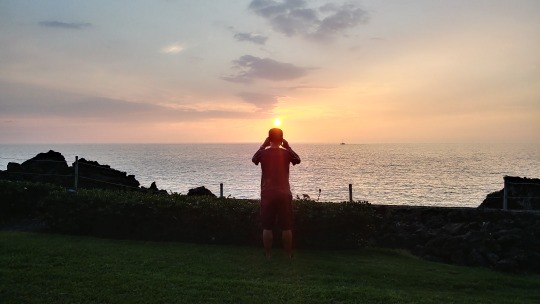

As amiable and easy going as you all know me to be, I knew I would be prone to a little pre Ironman World Championships fretting. I did not want to expose my loved ones to my potential dragon lady side so I sent Simon and Dad off to explore Volcano National Park on the other side of the Island on Friday. A rather unwelcome visitor arrived on Friday, perhaps the best euphemism I can use is “Aunt Flo”, what a cow, she was not invited and I was not expecting to see her. She threw me in a bit of a spin, but I pulled it together and added dealing with that to my race plan.
I got my race gear together, checked my bike and checked in. What an awesome hype! I had forgotten that I had listed my occupation on the Ironman registration form as “Secret Agent.” As I walked down the red carpet to check in they called me out, “Here is Kelly Phuah, she is competing in the women’s 45-49 age group…” [pause] “she is a secret agent!” Haha, cover blown!
I was welcomed into Transition by my very own volunteer escort, Craig. Craig and his wife, from Seattle, have been coming to the big Island for the last 10 years to volunteer for IMWC!
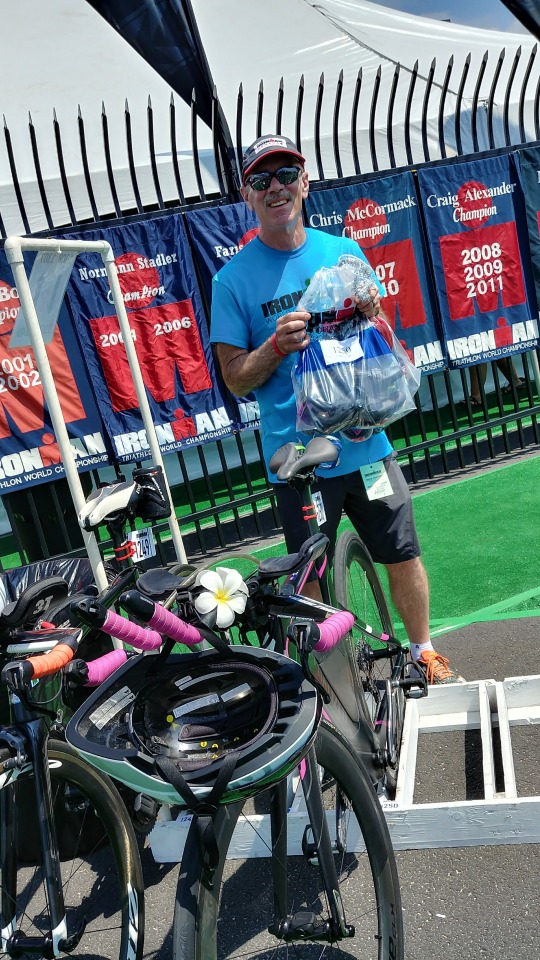
Whaaat!? I know right? Gulp, I felt a little overwhelmed at that moment. I racked my bike, hung my transition bags. Then I stood for a few moments on the red carpet, I let myself feel special for being there before heading off to eat and find an air conditioner!
I found my friend Mike and we talked race stuff and spectator logistics tips while sipping protein shakes with our feet up. It was the perfect pre race afternoon.
Dinner that night was right down in the middle of all the action at Honu’s, overlooking the athlete area and swim start with Ben, Lillian, Dad and Simon. There was much discussion over the spectator plans and I shared my hopeful race splits to help them know where I would be at certain times. I was worried about how the day was going to be for everyone who had come all that way to watch. I knew it would be a long hot day for them too.
I had to have the Hawaiian Pizza, oh wow, caramelized pineapple and kalua shredded pork, It was awesome!

I got antsy all of a sudden in the middle of dinner when I realised that I was doing a freaking Ironman the next day. I rushed our farewells with Ben and Lillian and dragged Dad and Simon home. I have no clear memory of going to bed or how I slept, my mind just leaps to Simon and I driving down Alii Drive at 4am!
Race Day
Goal: under 11hrs.
Gosh, how much detail can you handle? Do I make it sound epic and glamorous? I guess if you are reading this then you are either a really good friend or a weird triathlon junkie so I will just give you the ugly truth.
Treading water with 600 other women waiting for the start canon was crazy. Everyone was apologetically kicking each other. I looked back at the crowd on the shore and the pier and let the swell of excitement pick me up. I sighted the 1st boat and wiggled a little closer to the front. The cannon boomed and we turned from polite and apologetic to tiger sharks. I was kicked, swam over and grabbed, I had to restart my watch 3 times because the stop button was kicked. I am quite sure I did my fair share of kicking others too, it was impossible not to. And at one stage I found myself laying completely on top of another athlete, I have no idea where she,came from!
I found my rhythm eventually and was able to start really swimming. By about half way I could feel my speedsuit cutting into my neck and throat as I was sighting and turning to breathe. It left quite a good chafe and I looked like I had been strangled. I snuck a peak at my watch as we made the turn at the boats, I was happy to see I was on schedule for my goal of a sub 70min swim. I was enjoying the water, it was clear and fairly calm. I could see the bottom. I picked out a blue swim cap on the bottom and wondered if it’s owner was down there too. I made the last push to the pier and grabbed the stairs, I ripped off my speed suit with glee and made my way around to T1 on wobbly legs.
1:09:42
I rinsed off my face with some fresh water, grabbed my bag and dove into the tent, and with the help of another volunteer it was suit off, socks on, shoes on, glasses on, food in pocket, loo stop #1 and out to my bike. Helmet on and go go go.
4:44
Yay!! Spotted my posse as I took off on the bike.

Lol, my Dad showing me the way to go…

I settled in and got out onto the Queen K thinking ok Kona, show me what you’ve got, bring it, do your worst.
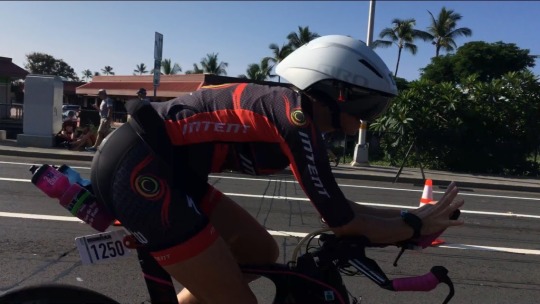
I had a plan, hold watts for an IF around .68-.69. Yeah, naa, that just did not feel right. I was hot and pushing those watts just felt a little more taxing than it should so I backed off a little and kept a closer eye on my effort than my watts. I guess the wind was kind because even at the lower watts I was still on schedule for a 5:40 bike.
The best tip from Mike, stay wet all day. So at every aid station I was grabbing a cold bottle of water and pouring it all over my body, it was keeping me relatively cool.
I was keeping an eye out for girls in my age group, I passed a few and but noticed as we got closer to the finish that we were all getting a little feisty and not letting each other get too far away.
The climb up to Hawi was the first time that I really felt good, not being familiar with the course had made me a little reserved but when I hit that climb I felt like I just had this one hard bit and I was more than half way. I made the turn for home at the top and launched myself down that descent with a mission. So much fun! I was ticking down the miles and aiming to be out on the run course in under 7hrs and that kept me on the gas all the way back into Kona.
Ugh, triathletes are disgusting, the visor on my helmet was totally aero but also saved me from taking a snot rocket the face. “Dude!!” I shouted as I passed, he looked really sorry, but still, look over your shoulder before you launch. Same goes for the girl taking a wee. Being splashed by someone else's piss is not cool either.
My guts were feeling a little sketchy nearing the end of the bike, I took a couple of Imodium hoping to hold off the horrible tummy cramps etc I seem to be prone to on the run.
I came hurtling down the bike finish chute, eyeballing my volunteer bike catcher, I dismounted like a swan gliding in for a landing on a lake while seamlessly passing my bike to the catcher. They will probably be playing that footage in the Kona highlights, because it was so freaking pro.
5:38:48
Into T2 in my socks, grabbed by bag, ripping off clothes as I ran, sort of like Superman - until my arms got hopelessly snagged in my super tight bike jersey and I resembled something more like a mad person trying to escape a straightjacket. Yay for those volunteers. So, shoes on, race belt in hand, loo stop #2 and off on the run.
4:33
Bahaaa, happens every time, my body rejoices for the 1st 2 km and I am lulled into a false sense of, “Oh hell yeah, I am going to be so amazing.” A quick glance at my overall time on my watch had me out on the run course in under 7 hours, yessss. I felt so confident that I was going to make that 11hr goal. All I had to do was manage a 4 hr marathon. Then at about kilometer 3 it began to suck. I saw my posse again at around this point, Simon and Ben ran alongside, giving me my position in the field and who was where, at that moment, they could have told me that there was a lion chasing me and it would not have made the bit of difference to my pace.
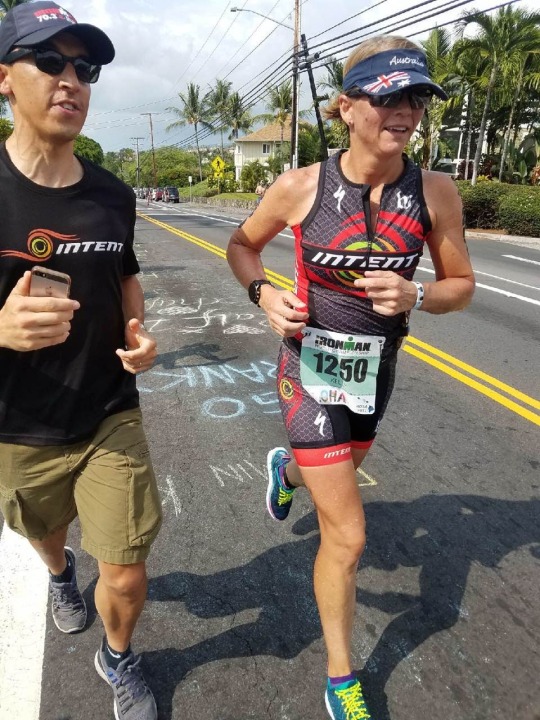
I ran on in misery, downing a couple more Imodium for my increasingly cranky gut. I had been taking salt tabs every hour, I had had mucho electrolytes and fluids on the bike and about 200 cals/hr all tried and tested and to plan.
Anyway, my mood began to shift, the discomfort in my gut was relieved for a little while. I was given a huge piece of ice at an aid station. I sucked it, rubbed it on my body, down my legs and sides, down my arms and over my face, I bit little pieces off and when it was small enough it put it down my top. (My gosh, that almost sound erotic - it quite possibly was!) By the time I was heading back along Alii Drive and saw my posse again, I was a different girl.
I got down to business, thinking, tidy posture, keep hydrated and wet. I was sad to see a few girls in my AG glide by but just kept to my own race and reminded myself that a sub 11 hr race was my goal and that racing someone else's game was not smart. There were 2 more loo stops on the run course, the last being out on Energy Lab road with about 16k / 10miles to go. After that I was feeling much better. I made it up out of the Energy Lab climb and headed for home gritting my teeth to hold on to that 4 hr marathon but intermittently smiling because I totally knew I was going to do it.
I was surprised to see another friend Liz cheering me on as I turned off the Queen K down Palani rd. Eek, that downhill was ugly, ouch, I felt like a robot, horrible form that I just could not fix at that point. I nearly cried when Simon told me I had a mile to go. A mile! Oh just make this OVER! Finally I entered the finish chute with an idiotic grin, feeling emotional, tired and proud. I punched the air 2 times as I crossed the finish line.
3:58:44
Total time: 10:56:31, 16/88 F45-49
So much room for improvement!
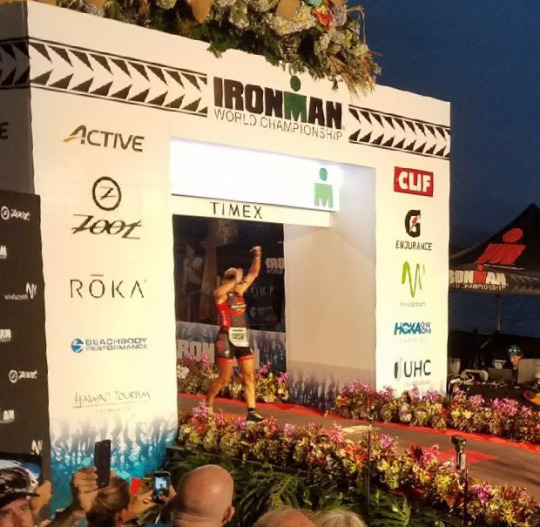
A friend asked me that night if I was keen to do it again, it only took one sleep for that answer to go from no way to yeah, I need another crack at that.
I got to spend another couple of days with Dad before we took off to opposite sides of the earth again. I was glad we got to see the town transform back into the cute little town it is 51 weeks of the year.
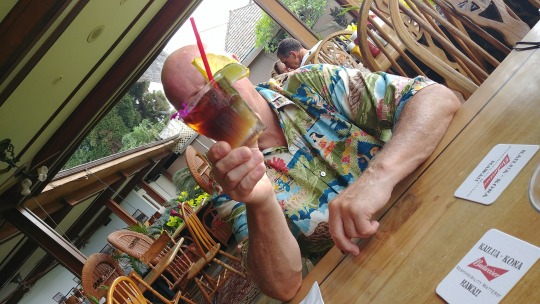
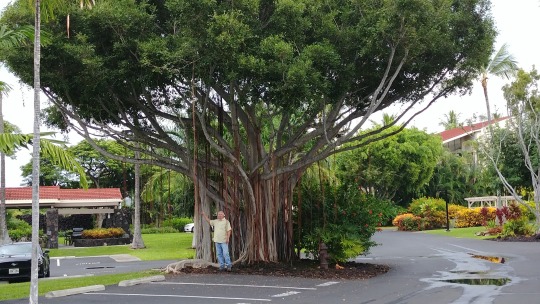
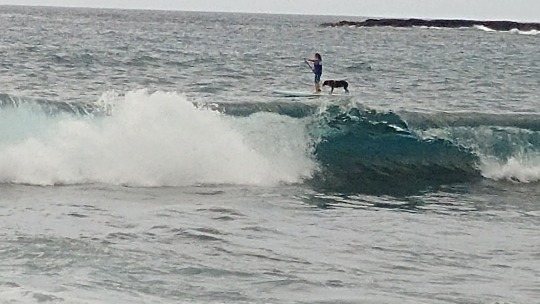
Mahalo!
I am surrounded by really hard working and intelligent people, people who inspire me to push myself and to be humble. (Well, I try with the humble bit.) I don't know many people more hard working and intelligent than Simon, he blows me away with his own dedication and humility and I live my life struggling to keep up with him. He is my biggest fan and I would not be doing any of this without his support.
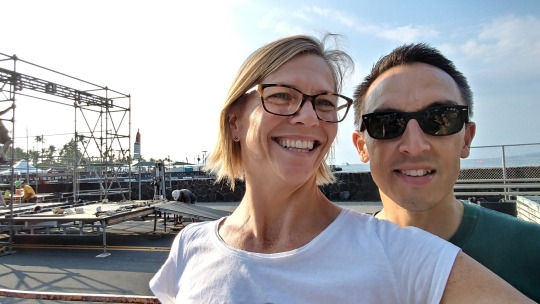
My race experience was made really special with the support and fun with Ben, Lillian, Dad, Mike, Jeff, Liz and and Simon. Oh guys, thanks a million.
The online messages and texts from my family, my INTENT team mates, and friends were wonderful!! Pre race pep talks from my very good friend Jeff kept me in check. Much love to everyone who was following my race online and cheering along at home
My coach Rick Schopp at INTENT is also one of those inspiring people, I have put myself into painville at his instruction so many times but I am still here, I am still keen and I am getting faster. He has shown me that the pain pays off. Sending me the Urban dictionary definition of whinge when I slightly lost my shit during my second last intense training week leading into Kona was just the kick in the pants I needed.

(That sounds rough, he may have added a few additional kind words in there too.)
Much love to Alex and Theresa for taking great care of our boys while we were away.
Many thanks to the volunteers who gave their time and to the super cute little town of Kona for letting us take over!
Mahalo xo

Now I count down just a few weeks to Ironman Cozumel before we pack up and make the very exciting move to Denver, Colorado! Two more years in the USA before we head back to Australia.
Pic credits: Thanks Ben, Lillian and Simon
2 notes
·
View notes